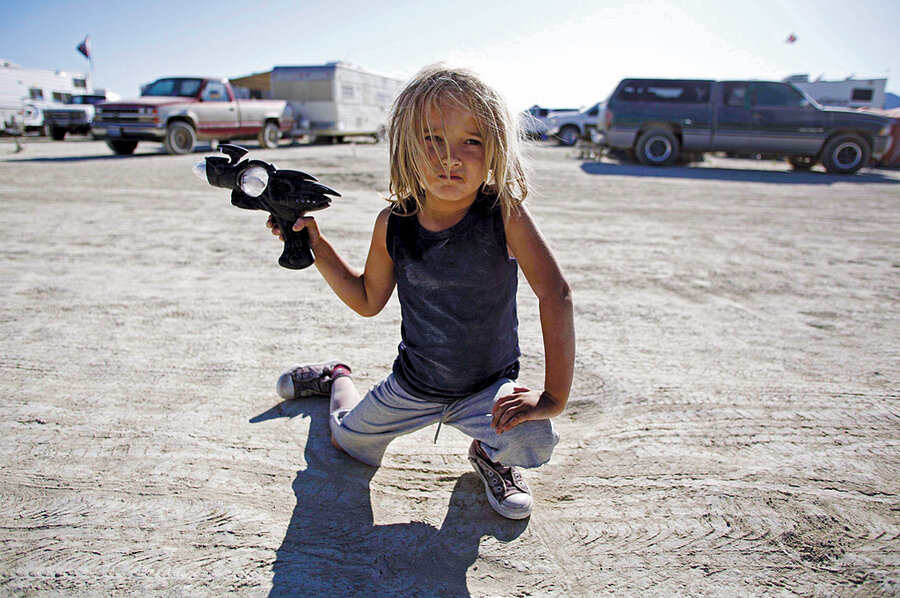Guns and freedom: the American paradox
Loading...
Guns were designed with one purpose. They don’t cut rope, drive nails, or propel baseballs. They are built to kill or maim. Very much of what you read in the news revolves around guns. Firearms are central to almost every conflict, crime, uprising, or peacekeeping mission. Governments use guns to maintain order. Rebels use guns to challenge authority.
There are more guns per capita in the United States than in any other nation. Some people like guns for hunting, target practice, and skeet shooting. If you have a gentle nature, though, you probably abhor firearms. Every time a confused young person opens fire at a school, a worker assaults co-workers, a stray bullet enters an inner-city home, or a spouse, passerby, political figure, or store clerk is attacked with a deadly weapon – every one of those violent acts is a powerful argument for locking guns away.
If you believe in the right to self-defense and liberty, however, you probably see gun ownership as natural and just. Every assault, home invasion, robbery, or hostage taking is a powerful argument that a lawfully armed citizen might have been able to stop the crime in progress.
The balance between public safety and individual freedom is not easy. From the Revolution through the settling of the frontier to the 21st century, guns have been embedded in the American experience. The Second Amendment to the Constitution appears to enshrine the right of individuals to own and carry firearms. In 2008 and 2010, the US Supreme Court issued landmark rulings that ensured possession of firearms for lawful purposes. Since then, a slew of state laws have expanded access to firearms and the freedom to carry them in public.
In the years to come, it appears, there will be even more guns in more hands in more places than ever before. As a Monitor special report notes, no one can say for sure if that will make society more, or less, safe. Scholars such as economist John R. Lott Jr. and criminologist Gary Kleck cite evidence that people who carry concealed weapons have stopped thousands of crimes from happening. But it’s hard to be sure about cause and effect.
The Brady Campaign to Prevent Gun Violence, meanwhile, argues that easy access to firearms is the reason that almost 100,000 people are shot or killed in the US each year. But do we blame the gun or the person?
Another paradox: The spread of guns in the US is happening amid an overall decline in violent crime. Yet violent crime (more than 12,000 murders and 44,000 shooting attacks in 2008) is still far higher in the US than in other industrial countries.
Guns and gun lore flow through our culture. Many of us grew up with toy revolvers and plastic rifles. We may have learned to shoot at summer camp (I did). We honor the embattled farmers who fired the shot heard round the world; the Old West sheriff whose quick draw dispatched the bad guys; the heroic soldiers, police officers, and law-abiding citizens who band together to defend themselves in a thousand movies. We cringe at gangsters, assassins, and bullies who brandish firearms to intimidate the innocent.
But if you take your knowledge of guns from pop culture, you have an unrealistic view of what they can and can’t do. Guns are precise only in the hands of trained marksmen. Gun wounds are rarely something a good guy can shrug off. Silent silencers, impregnable bulletproof vests, and bottomless magazines for blazing away are Hollywood nonsense.
It is a shame that we are still a species that feels comfortable, even celebrates, an instrument built solely to maim or kill. We are, after all, the same species that believes in persuasion and reason and has seen the efficacy of nonviolent movements. Yet ending tyranny and oppression and defending life and liberty still seem to require firearms.
Martin Luther King Jr. once said that the power of nonviolence rests in the idea that “you not only refuse to shoot a man, but you refuse to hate him.” One day, let’s hope, we’ll see that that radical concept, which runs through all religions and cultures, is far more powerful than black powder and lead.
John Yemma is the editor of The Christian Science Monitor.





